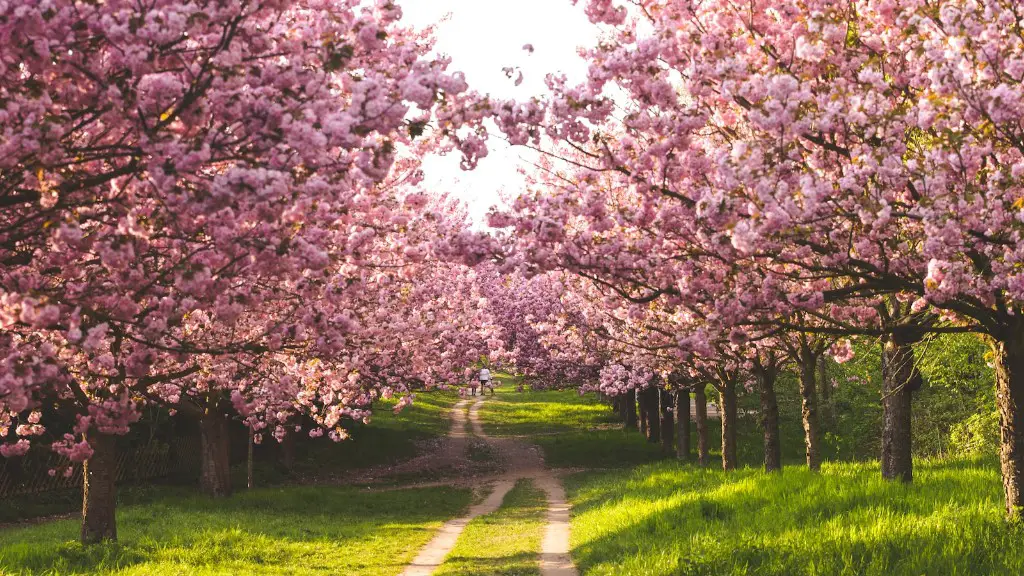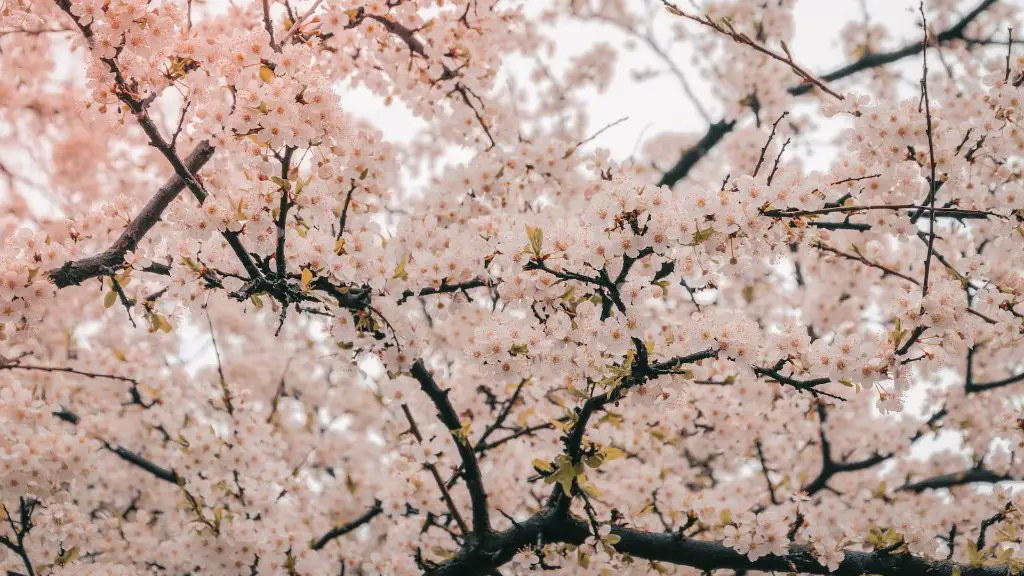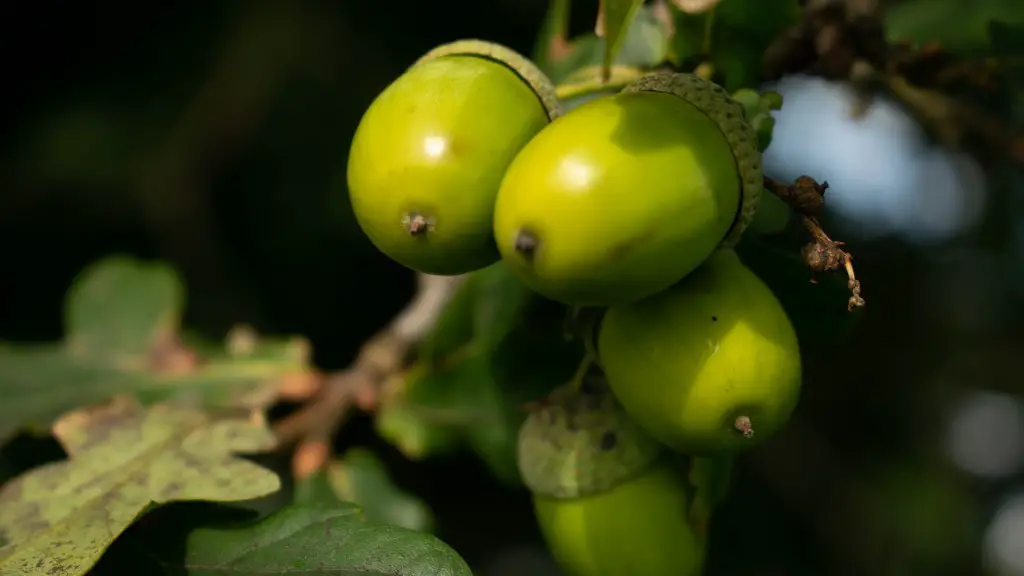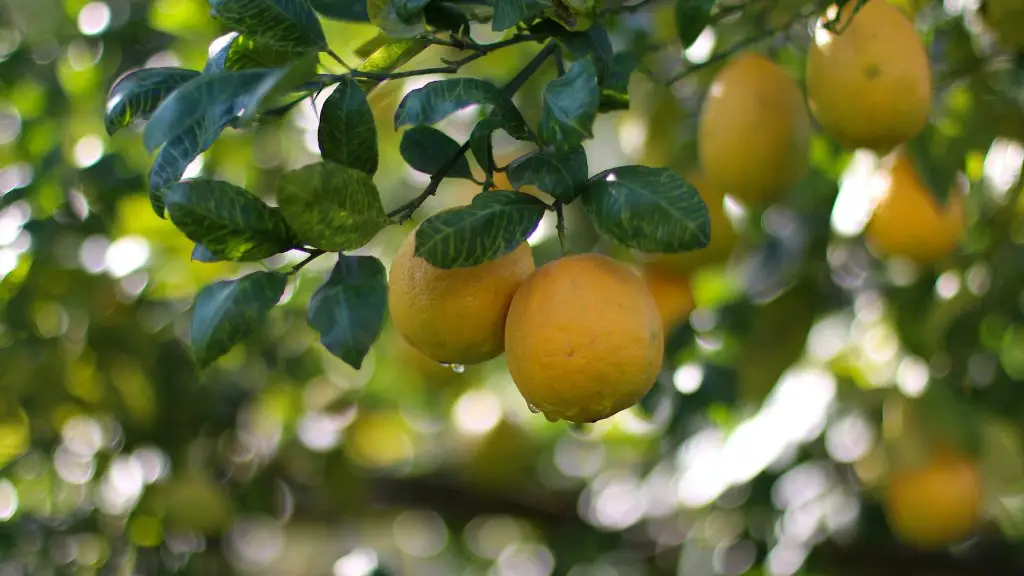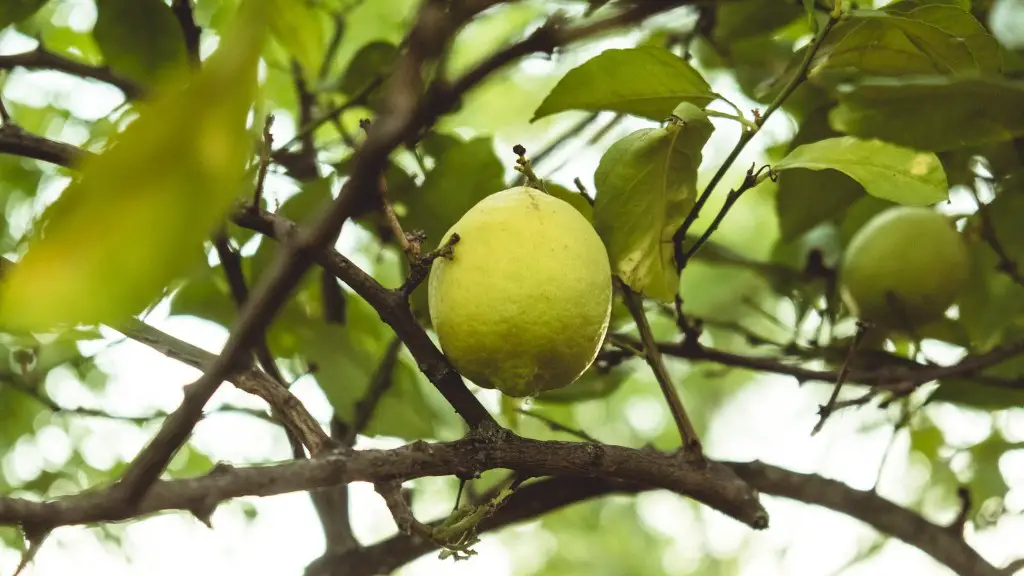Troubleshooting
A declining cherry tree is a heartbreaking experience for any gardener. Understanding what caused the deterioration and tackling the problem can be difficult and time consuming. In order to revive a dying cherry tree, you first need to analyze what caused the decline and then take steps to resolve the issue.
In some cases, the cause of the problem can be a lack of water or nutrients. This is especially true in areas with cold winter climates, where the soil may become too dry. Cherry trees also need to be pruned regularly in order to promote healthy growth and overall health of the tree. If the tree has been over-pruned or pruned incorrectly, this can cause extensive damage to the cherry tree.
In addition to water and nutrients, the cherry tree needs plenty of sunshine to remain healthy. Trees that are planted in shady areas may be prone to disease and deficiencies of essential nutrients. Exposure to too much sunlight can also cause scorch marks or dehydration, so it is important to find a balance between adequate light and shade for the cherry tree.
When troubleshooting problems with a cherry tree, it is important to check for signs of pests and diseases. Common pests that can affect cherry trees include aphids, mites, and scales, as well as other potentially harmful creatures. Additionally, there are many types of diseases that can be detrimental to a cherry tree, including blight and powdery mildew.
Once you have identified the source of the problem, you can then take the right steps to revive the cherry tree. If the soil is too dry, you can supplement the water by applying extra moisture. If the cherry tree is diseased, you must begin treatment immediately. This can involve taking steps such as introducing beneficial fungi and pest-repellants. Pruning is also important to maintain the health of the tree and to prevent unneeded growth.
If your cherry tree is in dire health, you may need to employ a professional tree service to assess the issue and provide you with proper advice. Professional tree services have the expertise to identify and fight off hazardous diseases, pests, and other issues. They can also provide assistance with trimming and pruning to help revive your cherry tree to its original health and beauty.
Fertilization
Fertilization is a fundamental step to ensure the health of a cherry tree. Fertilization must be done at the right times of the year, and a balanced fertilizer is the most beneficial. If you’re unsure of how to fertilize a cherry tree, contact your local county agricultural office or extension center for advice.
Fertilizers should be applied in accordance with the soil type and the condition of the tree. It’s also wise to always hose off any excess fertilizer from the leaves or trunk and keep an eye out for signs of dehydration. Too much fertilizer can be damaging to a cherry tree, so it’s important not to overdo it.
Organic fertilizers, such as cow manure or Compost Tea, can also be used to naturally fertilize a cherry tree. These fertilizers are known to be gentle on the tree and nourish the soil while also promoting natural tree growth.
If you can’t access organic fertilizers, there are certain chemical fertilizers that are harmless to cherry trees and offer nutrition. These fertilizers typically contain nutrients such as nitrogen, phosphorous, and potassium, and should be applied regularly to maintain balanced soil nutrition.
Once you have chosen the right fertilizer and noted the appropriate application times, you should then begin the process of fertilizing your cherry tree. Start by watering the tree before you apply the fertilizer, as this will prevent burn marks and dehydration. Always use a garden trowel or hand-trowel to gently spread the fertilizer around the tree’s roots.
Pruning
Proper pruning is vital for any tree and especially for cherry trees, which require regular trimming in order to achieve a desired size and shape. Pruning should be started when the tree is young and should be done annually, or as needed to remove dead, diseased, or damaged branches. When pruning, it’s important to make sure that the cuts are slightly angled and made at a slight outward angle.
When pruning a cherry tree, it’s important to be careful not to make an excessive amount of cuts as this can permanently damage the tree. Additionally, you should take precautionary measures to protect the trunk of the tree during the pruning process. Pruning during the spring or summer months can reduce the risk of extreme weather damage to your cherry tree.
When pruning a cherry tree, it’s also important to observe the overall appearance of the tree. If you find that the tree is too top-heavy, or has too many branches, pruning can help reduce stress that the tree is facing due to excess maintenance. Additionally, keeping the tree at an appropriate size can allow for better management of pests and diseases.
Before pruning a cherry tree, it’s important to be aware of any potential diseases that the tree may have. Certain diseases and pests can spread to other trees or plants if their spores are not properly treated. If you notice any signs of disease, it’s important to speak with a professional tree service in order to properly diagnose and treat the issue.
Keeping a cherry tree properly pruned can ensure that it remains healthy and strong. Proper pruning can help prevent disease, improve air circulation, and promote the future growth and health of the tree.
Mulching
Mulching is a great way to protect the soil in and around a cherry tree. Mulch prevents soil erosion, improves water retention, and adds important nutrients to the soil. In addition to providing protection, mulching can also help regulate the temperature of the soil around the tree.
When it comes to choosing a mulch, you should choose one that is organic and has a fine texture. Fine-textured mulch will be better able to hold onto moisture and nutrients, whereas coarse-textured material can be more prone to erosion. Additionally, avoid using wood chips or acidic materials, as these can interfere with the tree’s natural chemistry.
Mulch should be applied to the soil in and around the tree’s roots. Applying a 3-5 inch layer of mulch is sufficient for optimal protection. Additionally, the mulch should be placed at least 4 inches away from the base of the trunk, as this can prevent problems such as disease and root rot.
When laying down the mulch, be sure to still leave a two-inch gap between the mulch and the trunk in order to promote healthy air circulation. Additionally, also make sure to water the soil after mulching. This helps to lock in the protective benefits and moisture of the mulch.
Mulching is a great way to protect the soil around a cherry tree and help improve the tree’s overall health. Always use an organic mulch, and be careful to apply the material properly and avoid compaction.
Watering
Watering is an essential component to keeping a cherry tree healthy. New trees require more frequent watering than mature trees, as they are less able to retain moisture. Mature trees should be watered once or twice a week during dry periods. Additionally, it’s wise to periodically check the soil’s moisture level with a spade.
Be sure to avoid over-watering your tree. Too much water can be damaging to the tree and can lead to root rot, or the spread of pests and diseases. Additionally, water the soil around the tree instead of the foliage or trunk. Also, be sure to always water the cherry tree first thing in the morning for optimal moisture.
If you live in an area with a higher water shortage, it’s wise to conserve water by using a drip irrigation system or a soaker hose. Drip irrigation systems allow water to be delivered directly to the roots of the tree, so less water is used overall. Additionally, soaker hoses can be used to water your cherry tree while also supplying nitrogen and other nutrients.
Proper watering is vital for a healthy cherry tree. When in doubt, it’s wise to consult with a local tree service to ensure that your cherry tree is receiving the best care and maintenance.
Protection
Protecting a cherry tree from environmental damage can ensure its healthy growth. In certain cases, cold weather can be damaging to a cherry tree. Young trees are especially prone to damage from cold temperatures and should be protected in the winter.
If you live in a cold climate, you may need to use an insulation system for your cherry tree. Wrap the tree with a blanket of insulating material, such as burlap or coconut coir. Additionally, plastic or canvas can be used to provide additional protection for the tree.
In areas of heavy rainfall or snow, you may wish to use a tree canopy or a shade net. This can help protect the tree from excessive moisture, as well as helping keep the soil temperature consistent.
You can also use a trellis or other support structure to protect the cherry tree from wind damage. Make sure that the trellis is durable and stable, as too much stress can be damaging to the tree.
In the summer months, sunburned leaves can be a problem for cherry trees. For this issue, you should provide some shade around the tree, either artificially or through natural sources. Additionally, a sun shade paint can be applied to protect the tree’s leaves from excessive UV light.
Whether it’s during the winter or summer months, it’s important to take the necessary steps to protect your cherry tree. With proper care and attention, you can ensure that your cherry tree will remain healthy and vibrant for many years.
